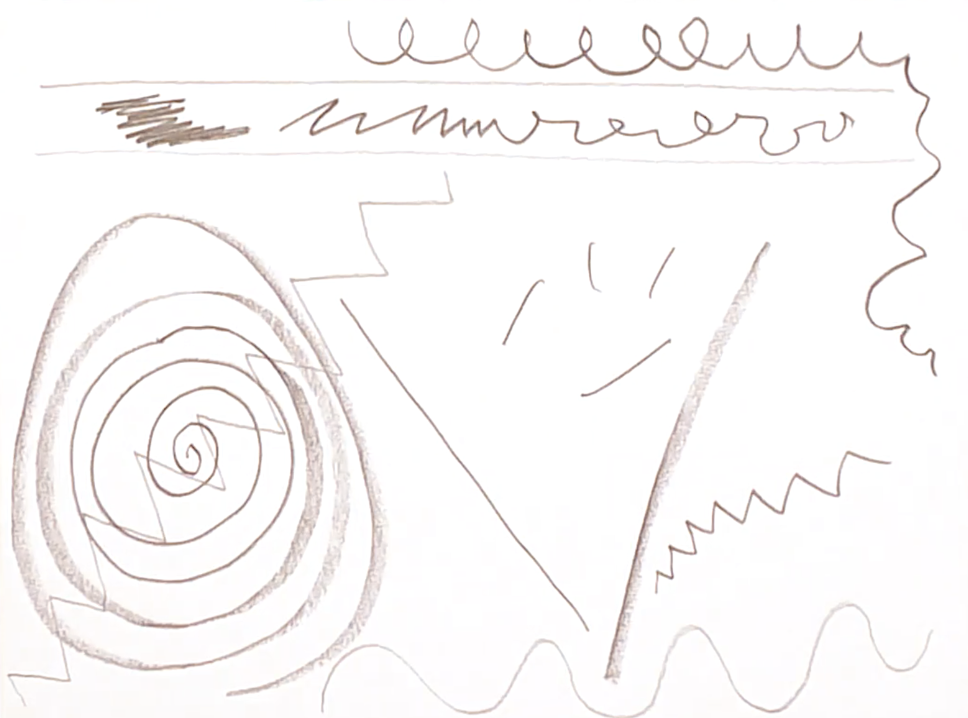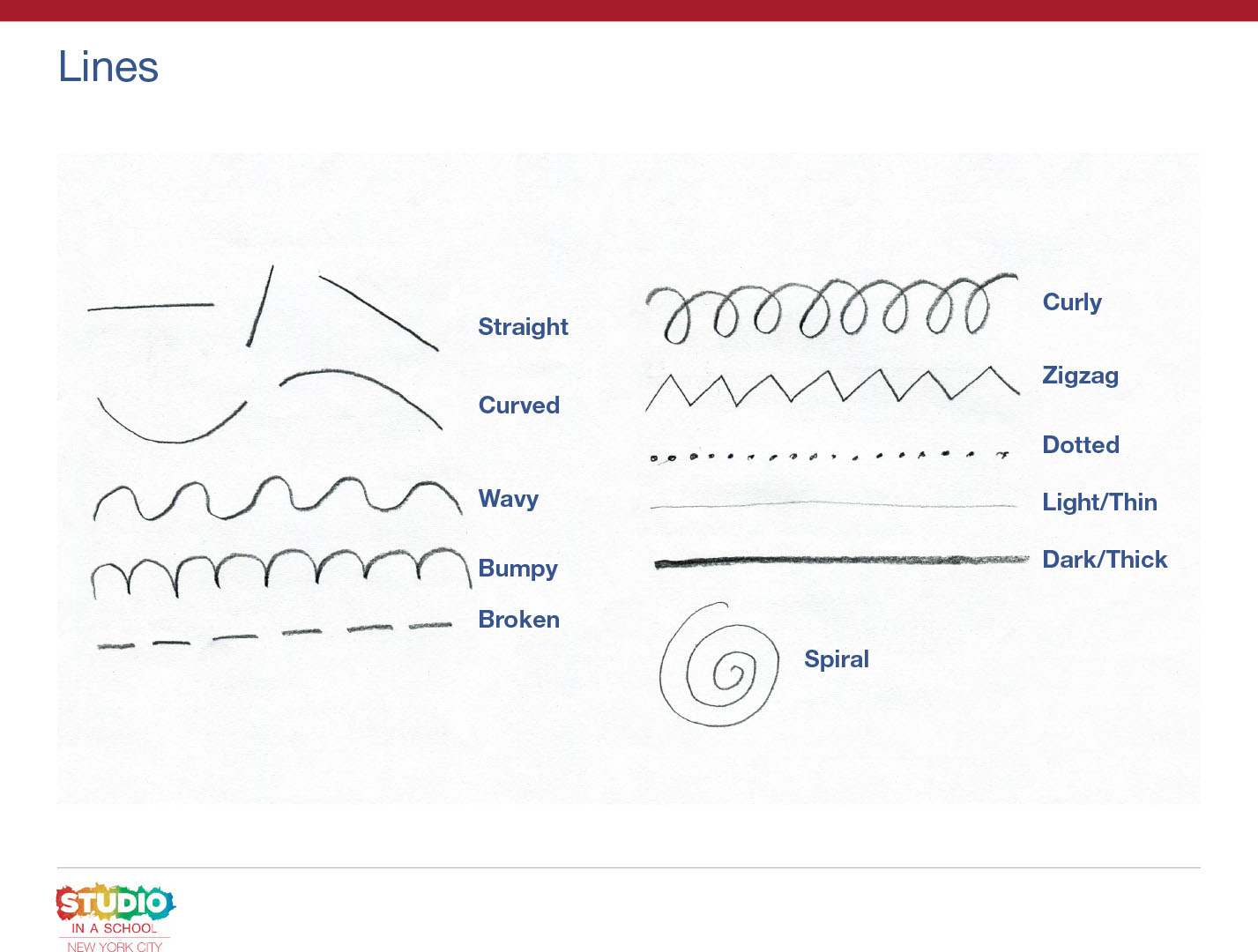Overview
Students will draw a variety of lines and organic shapes.
Materials and Tools
- Ebony drawing pencils
- 2 sheets of 12 x 18” drawing paper per student
Activities
Step 1: Drawing Lines
Hello artists! Today we are going to start our drawing unit by talking about lines. What are “lines”? What lines do you notice when you look around the room you are in?
Artists use lines to show both what they see, and to express different ideas. How can we draw different kinds of lines using our Ebony pencils?
We can use our pencil to make light and dark, and thin and thick lines. How can we use a pencil to make light, thin lines? We can hold it loosely and use very little pressure. How can we make dark lines, and thick lines?
Now it’s your turn to explore drawing different kinds of lines.
Here are some suggestions to try:
- Draw thin, light lines
- Draw dark lines
- Try holding your pencil from above to draw thick lines
- Combine different lines to create your own lines
Think about where you will draw each line on your paper as you work. Will any of your lines cross over other lines?

Step 2: Drawing organic shapes
Now how can we change these lines to make them into interesting shapes?
What happens when any kind of line closes—it makes a shape! An invented shape like this is called an organic shape. Organic shapes are often the shapes of things that grow, or that we might find outside in a park or in the sky. Why do you think we call these shapes “organic”? How do you think artists use organic shapes in their work?

On your second paper, try drawing a few organic shapes using different kinds of lines. Then, choose 2-3 different lines and combine them to make a new shape.
Step 3: Reflection Questions for Discussion
Questions for Individual Students
Line drawings:
- What kind of lines did you draw?
- Where did you draw your lines on your paper?
Shape drawings:
Pick one of your favorite shapes.
- How can you describe this shape?
- What lines did you use to make it?
- What name will you give this shape?
Questions for Whole Group
- How do you think the artist used their pencil to draw these lines?
- Describe a shape that you notice in this drawing. What lines did the artist use to make it?
Vocabulary
Drawing
Ebony pencil
Lines: straight, curved, wavy, bumpy, zigzag, curly, dotted, broken, spiral
Line qualities: soft/hard, light/dark, thin/thick, short/long
Organic shapes
Resources

Charles E. Burchfield. Untitled. 1916, Graphite on paper. Charles E. Burchfield Foundation Archives at the Burchfield Penney Art Center, Buffalo. https://burchfieldpenney.org/art-and-artists/artwork/object:a2006-008-005-079-80-untitled/
Resource: Explore shapes in works of art in the lesson: Elements of Art: Shape from the National Gallery of Art: https://ny.pbslearningmedia.org/resource/shape-image-gallery/elements-of-art-national-gallery-of-art/
Explore shapes in works of art in the lesson: Elements of Art: Shape from the National Gallery of Art:
https://ny.pbslearningmedia.org/resource/shape-image-gallery/elements-of-art-national-gallery-of-art/
Adaptations
For Multilingual Learners
- Students can use their hands or bodies to show different kinds of lines and shapes.
- Students can show the hand and arm motions used to draw different lines and shapes.
- Students can share different sounds that they associate with their lines and shapes.

